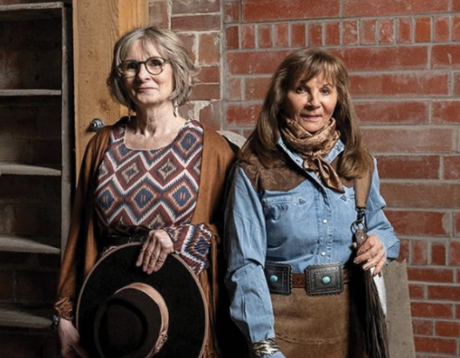Rodeo is a way of life out west and as the cowboys saddle up to begin another year of competition, another way of life – sponsorship by Dodge trucks, now known simply as Ram – enters its 32nd year.
It’s arguably one of the longest continuously-running non-racing sports oriented manufacturer sponsorships in North America; certainly it’s the oldest non-stop rodeo involvement.
And it’s going to last at least 35 years. Martin Sobie, Ram Rodeo Manager Canada, says an agreement has just been finalized with the Canadian Finals Rodeo in Edmonton for another three years.
Ram’s involvement is a huge undertaking and it’s interesting that the program goes on even though there’s really no scientific way to measure the sponsorship’s effect on sales.
“There are 53 sanctioned rodeos in western Canada,” says Sobie “and our program is in 44 of those.
“We’re also at the Canadian College Rodeo Finals in Edmonton and in Little Britches events for kids 12 and under,” he adds. “We’re involved in 65 events through the year.”
Just for comparison, the Ram program is involved in 550 events in the U.S.
The switch from “Dodge” to “Ram” as the brand name on sponsorship materials took place last year, although both names will likely be used for awhile at smaller venues even though it’s primarily a truck program.
“Rodeo, chuckwagons – everything pertaining to the western way of life is primarily trucks,” says Sobie.
Currently 17 trucks are in the hands of rodeo competitors, 13 of them are diesels and the Ram sponsorship is important to cowboys. They do a lot of travelling “goin’ down the road.”
“On a typical weekend it’s not uncommon for cowboys to go to four rodeos in 36 hours,” says Sobie.
Prior to taking on the post of head of communications for Chrysler Canada, LouAnn Gosselin spent some time as the person in charge of sponsorship programs.
Neither she nor Sobie will reveal any dollar figures on the cost of the Ram rodeo program, but Gosselin says “it’s a big part of sponsorships, along with NASCAR Canada and the Caravan Kids hockey program.”
Sobie says budgeting is based on individual events, “based on history, projected attendance, display opportunities” and all the associated costs of the participation at the site.
That’s as close as the two will come in discussing dollars either in terms of costs or about the actual return to the company in terms of sales.
They say the advantage is in dealing with people at a grass roots level both with their dealers and with the people who turn out to watch the action.
“We have the opportunity to work with people who buy the trucks, who use the trucks. It’s a natural fit,” says Gosselin while admitting the benefits are impossible to quantify.
Even without hard figures, it would appear the marketing gurus recognize a good thing.
“The financial troubles made us take a hard look at programs,” says Gosselin. “We determined that rodeo, along with NASCAR and Caravan Kids did result in sales and the programs were kept.
“The grass roots dealers can become the home town heroes. Most will do pancake breakfasts and stage events associated with the rodeo when it’s in town,” she says.
“It is one of the few programs that have a reasonable view of return on investment just by looking,” she says.
Sobie agrees.
“Go to any big rodeo and go into the parking lot, whether it’s the spectator lot or the cowboy area.
“We usually have at least 70% of the trucks in the lot.”
He says the participation of dealers, especially in rural areas is huge.
“While it’s anecdotal and in no way scientific, one dealer feels his involvement in rodeo accounts for at least 20% of his business – mostly trucks.”
“Results are not scientifically measurable,” says Gosselin, “but you SEE it when you go to the events and tour the parking lots.
“It’s very difficult to quantify the results in terms of sales,” she adds. “With the trucks, you’re planting seeds.”
It’s that grass roots connection that keeps the program running.
You might say it’s a cowboy version of “race on Sunday; sell on Monday.” It might take a little longer, but Ram sees a lot of seeds sprouting.
 Source: Autonet.ca
Source: Autonet.ca














